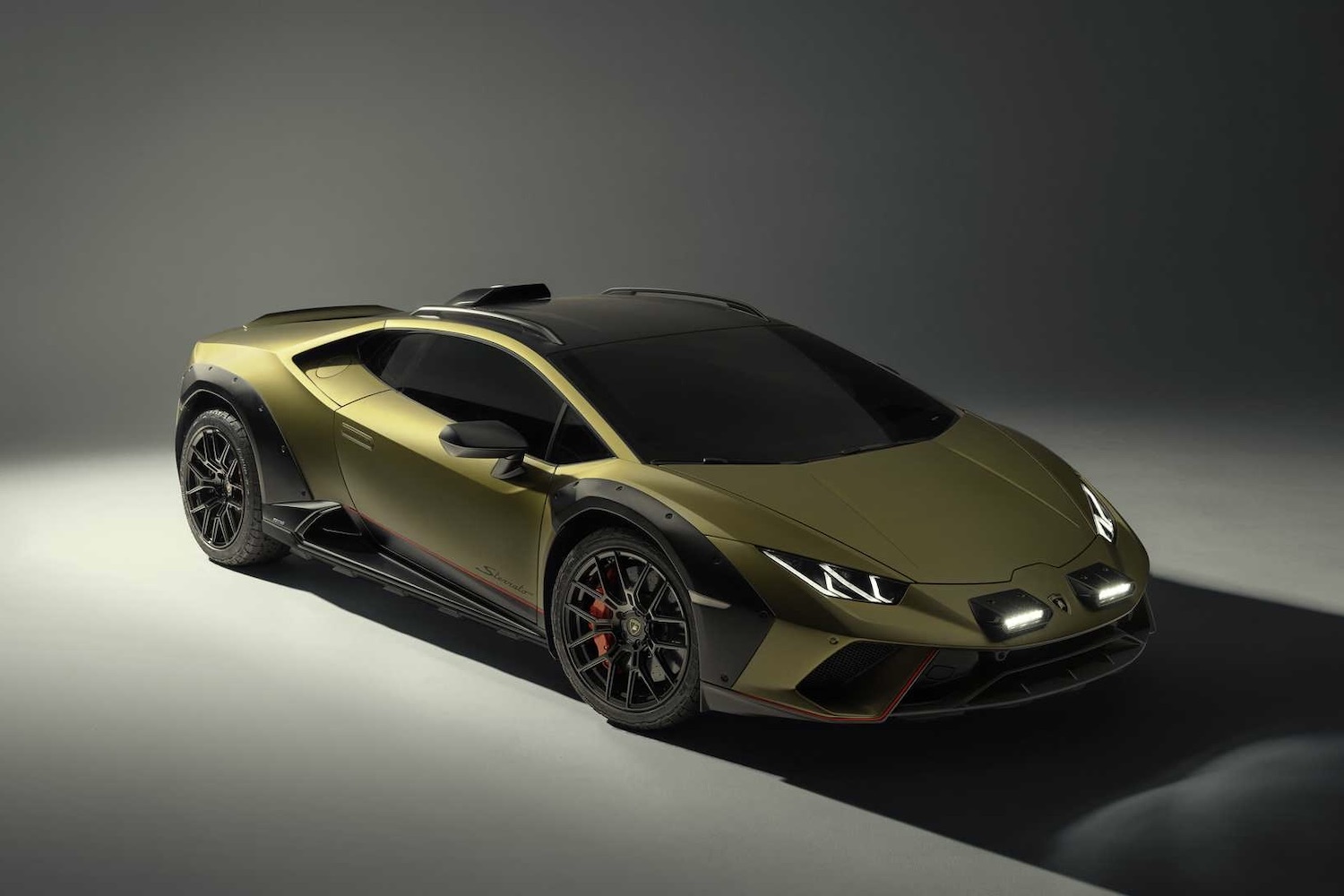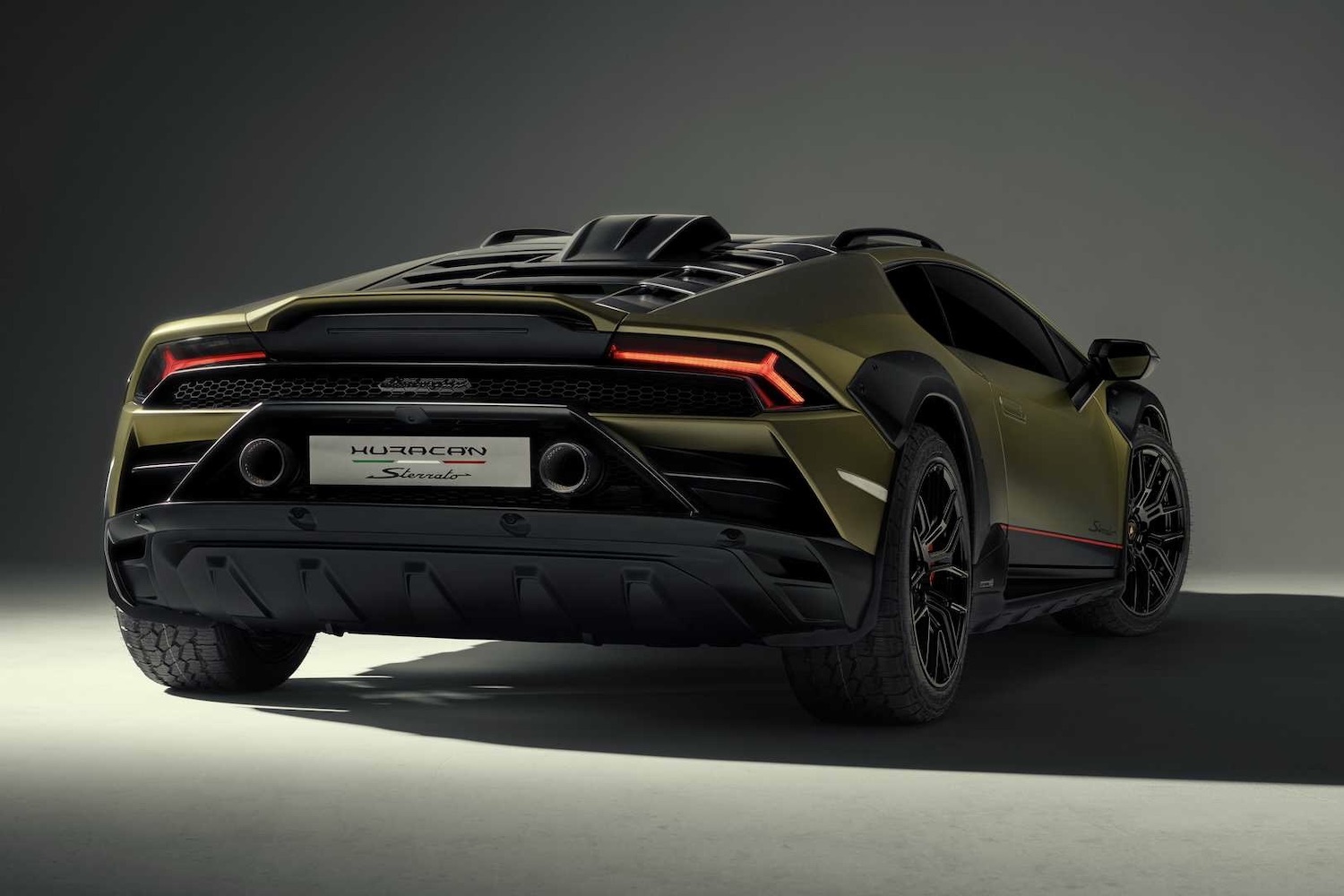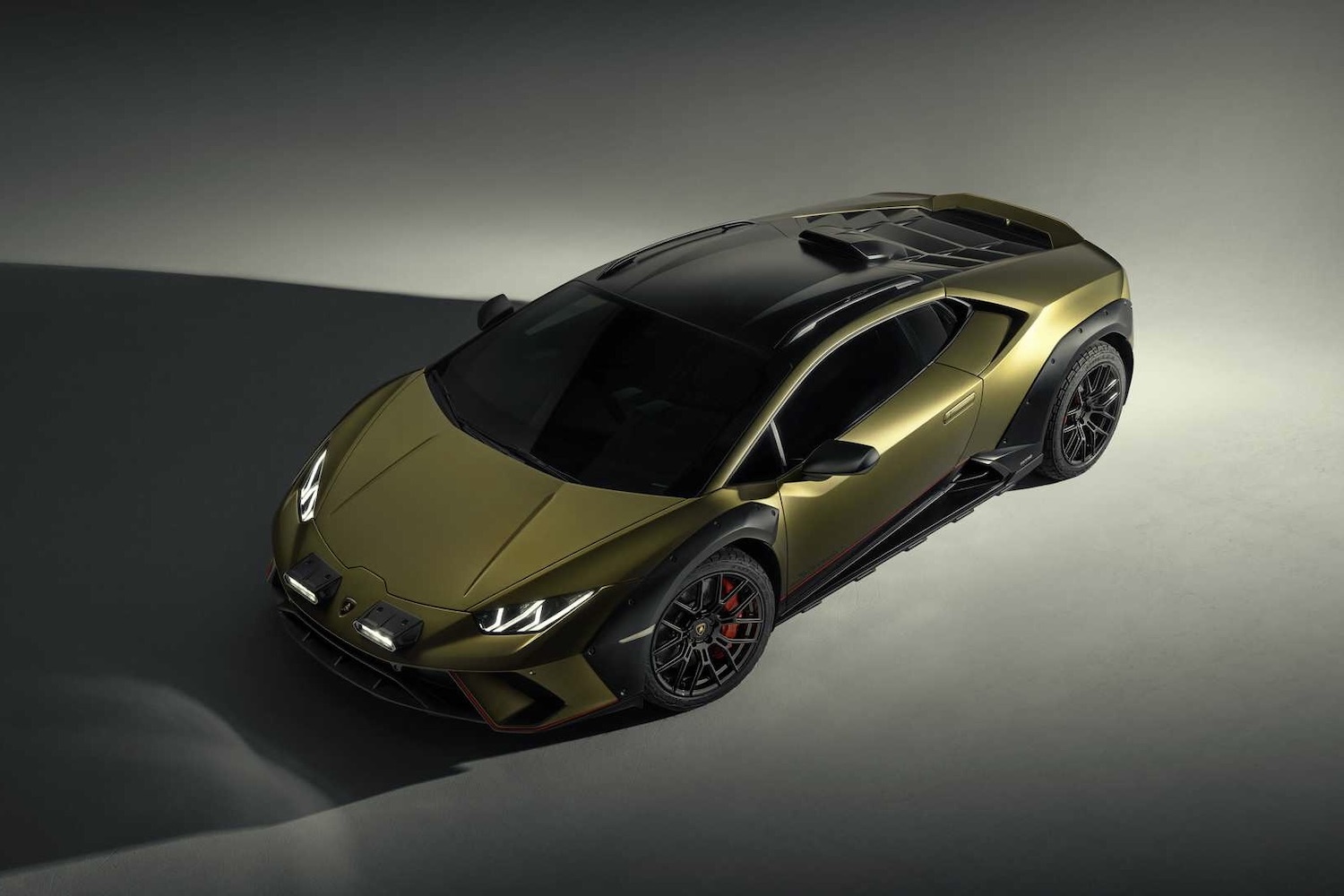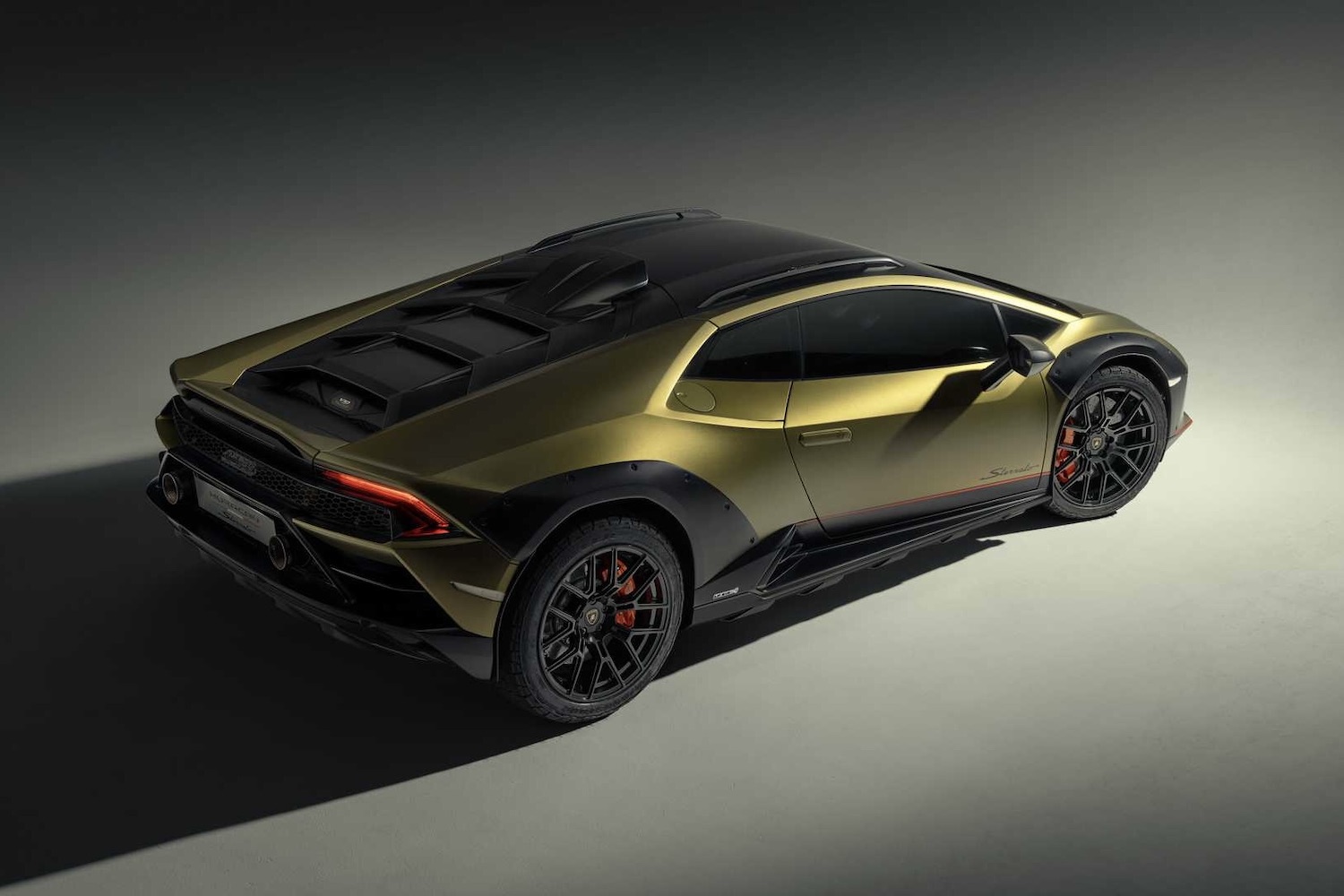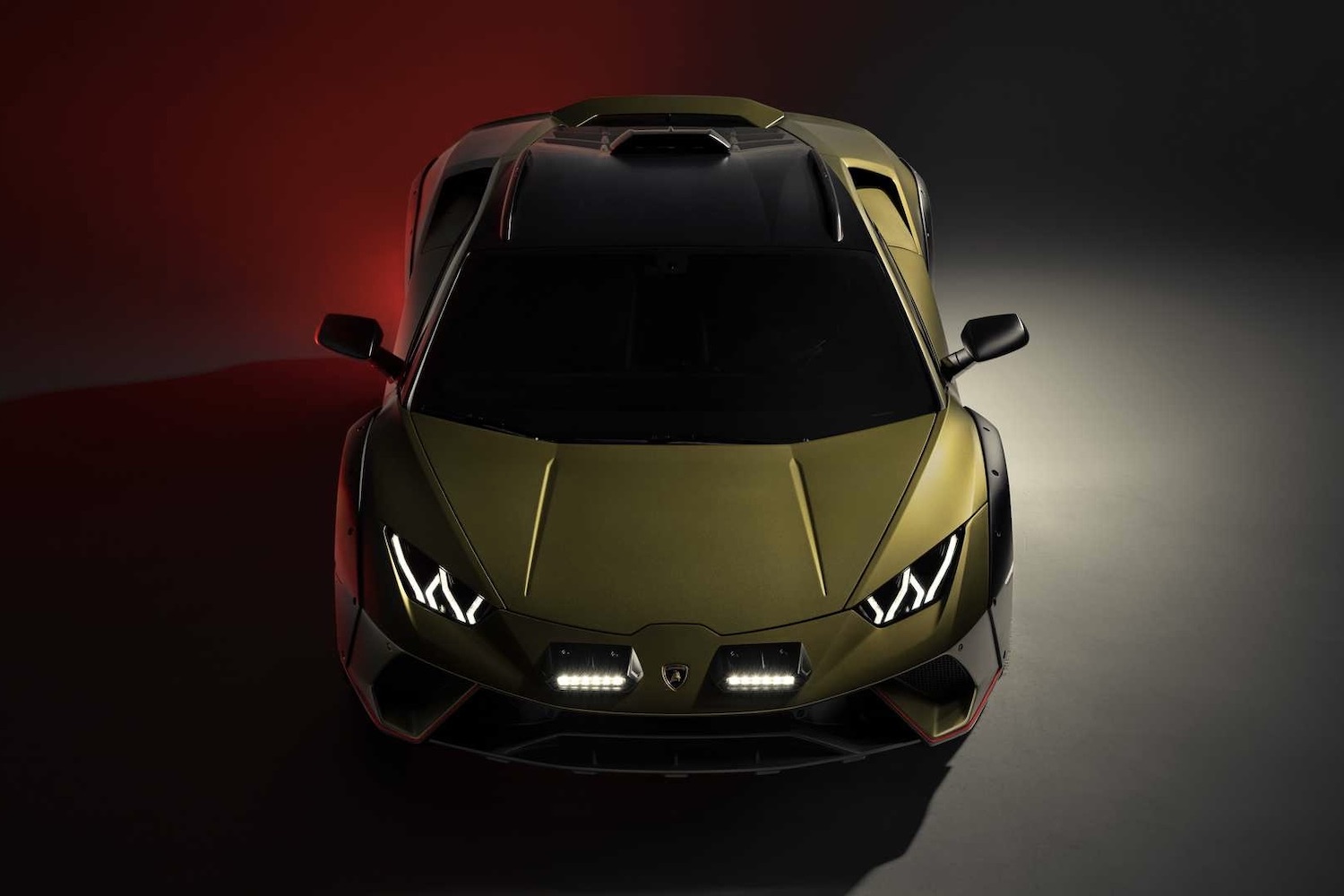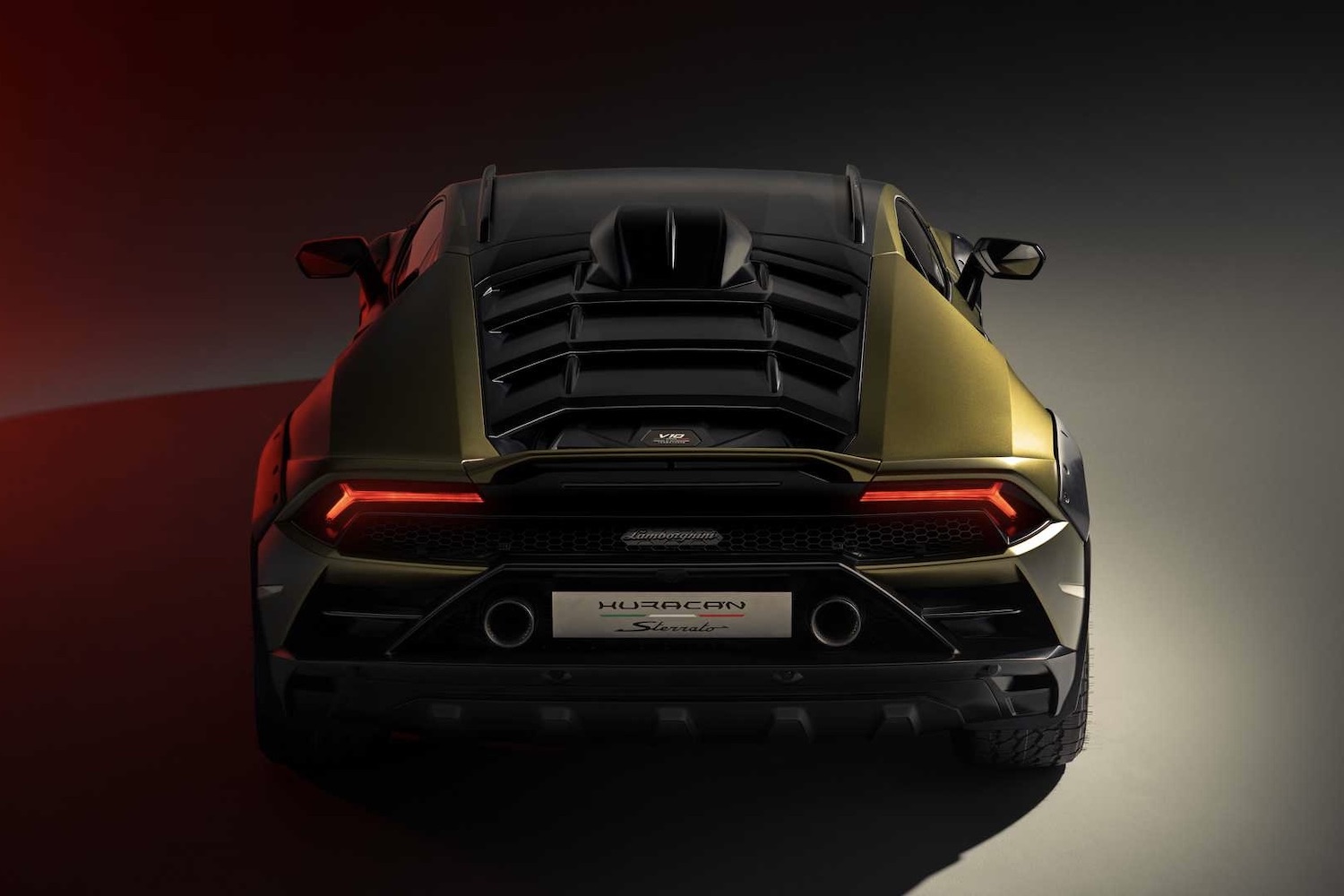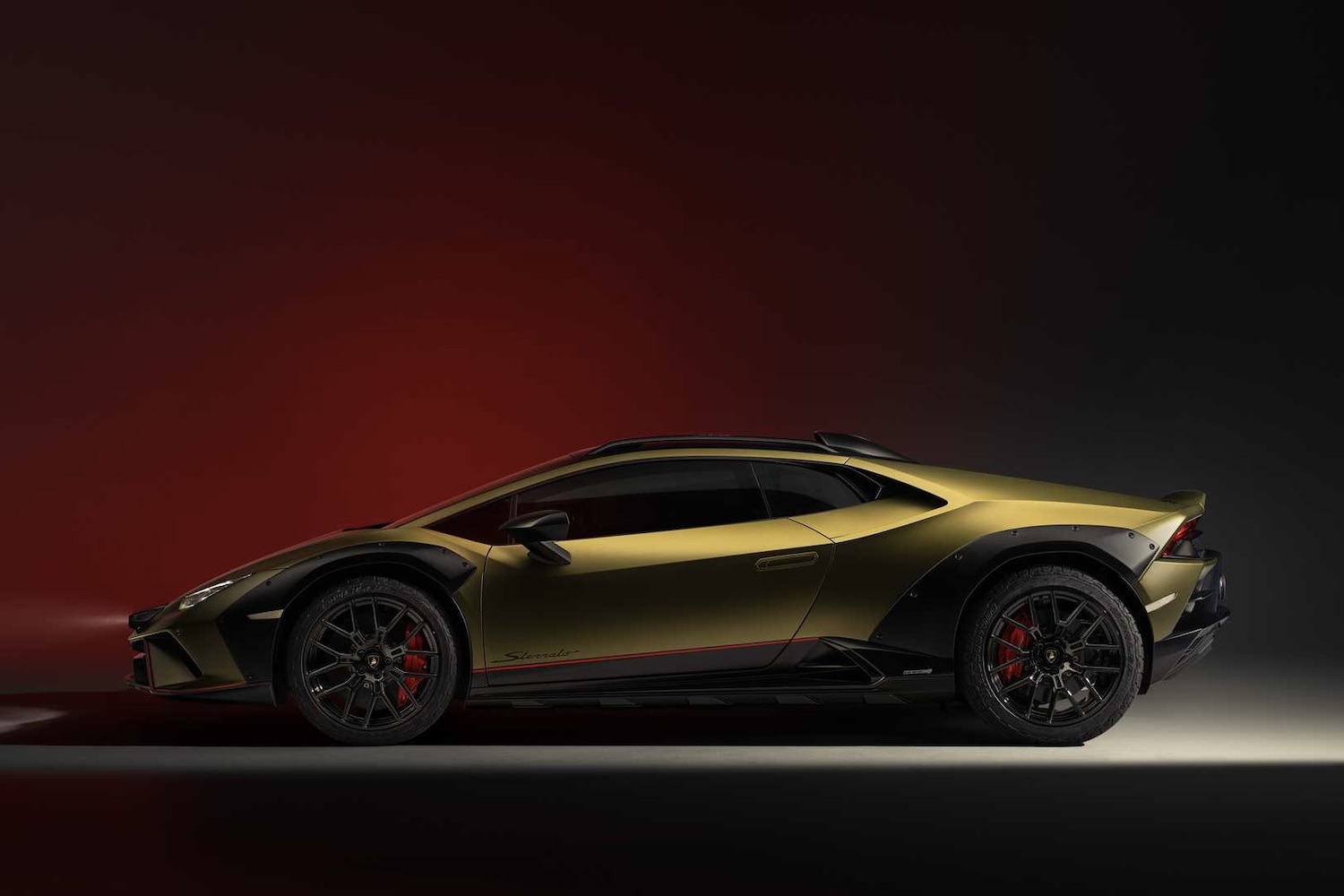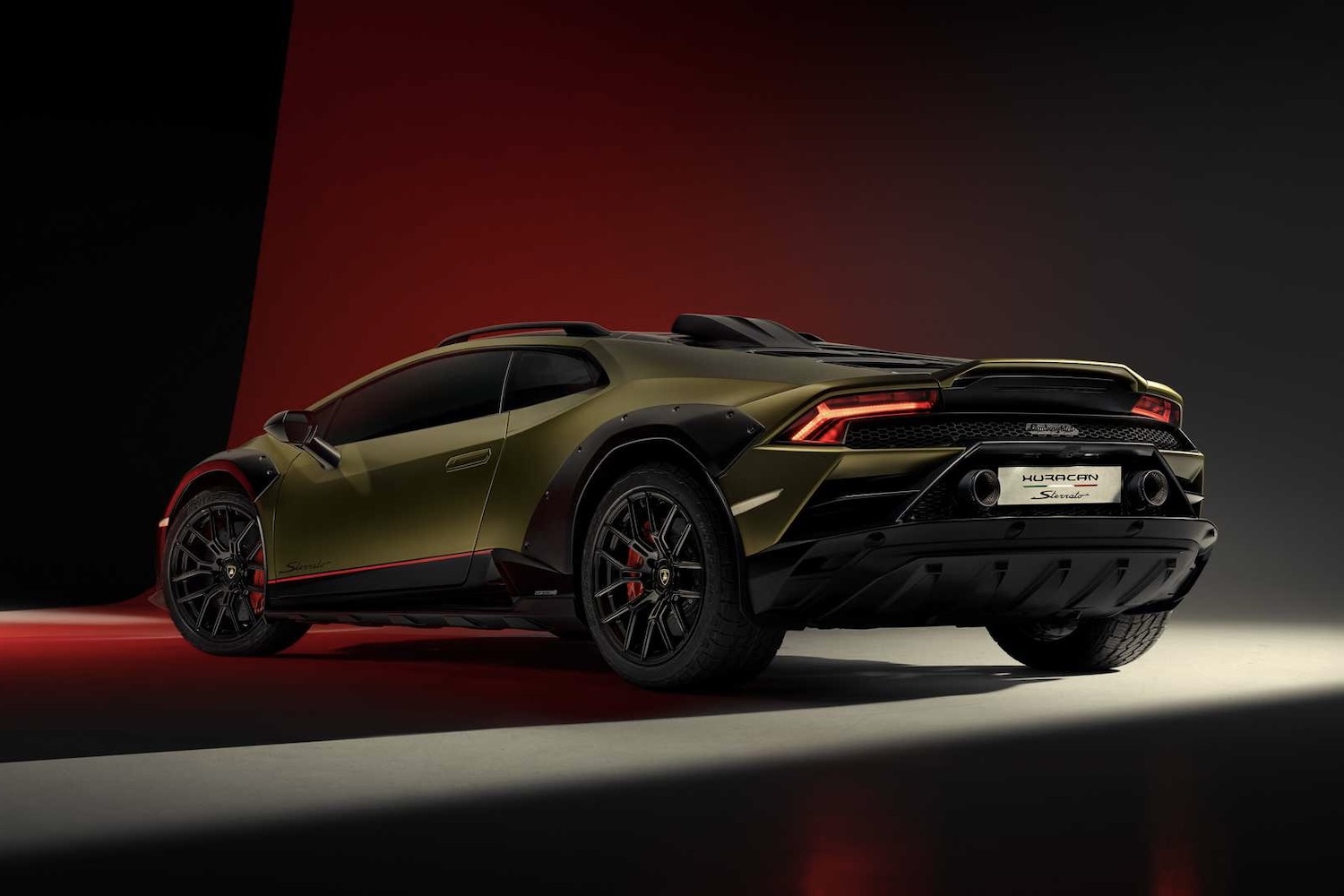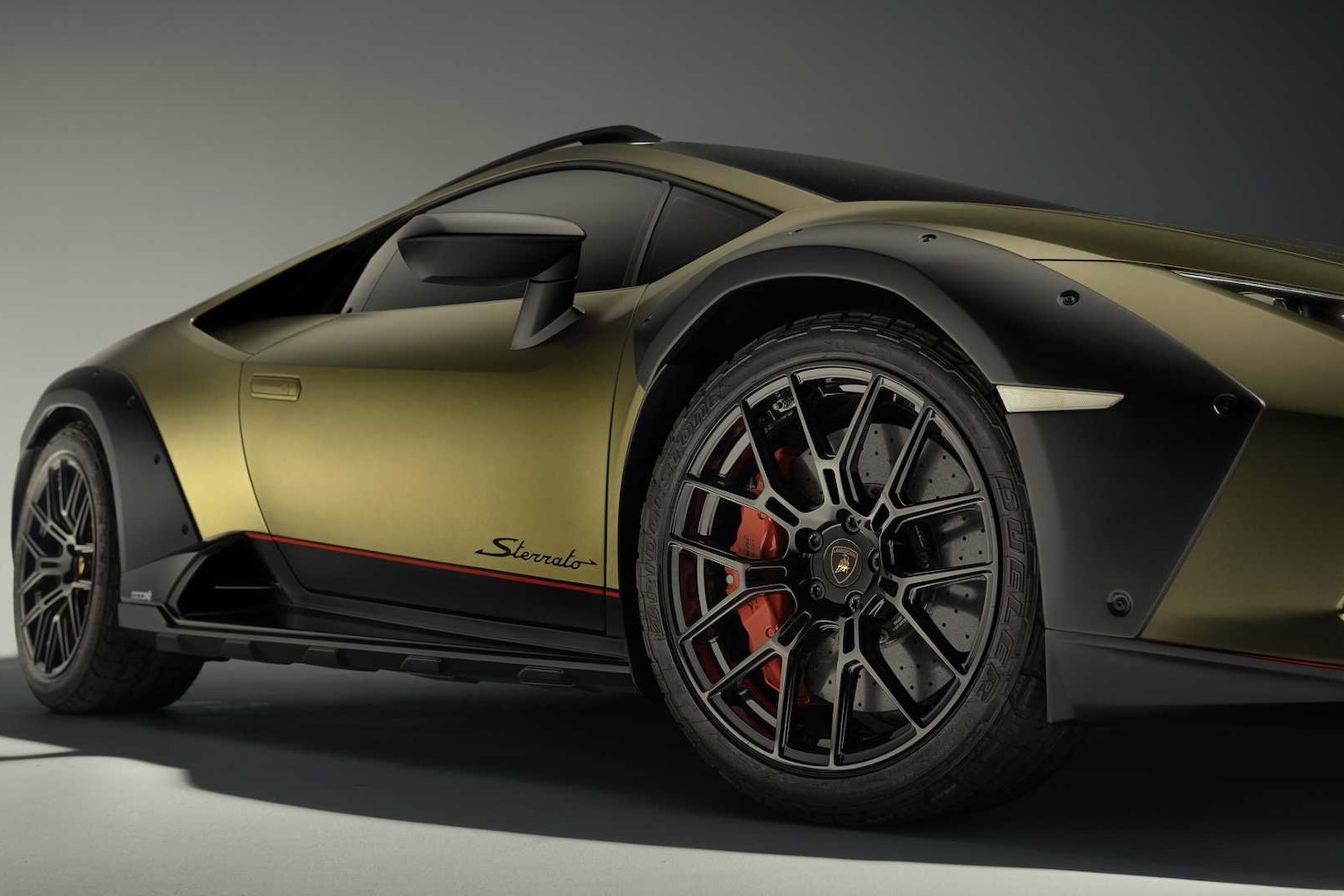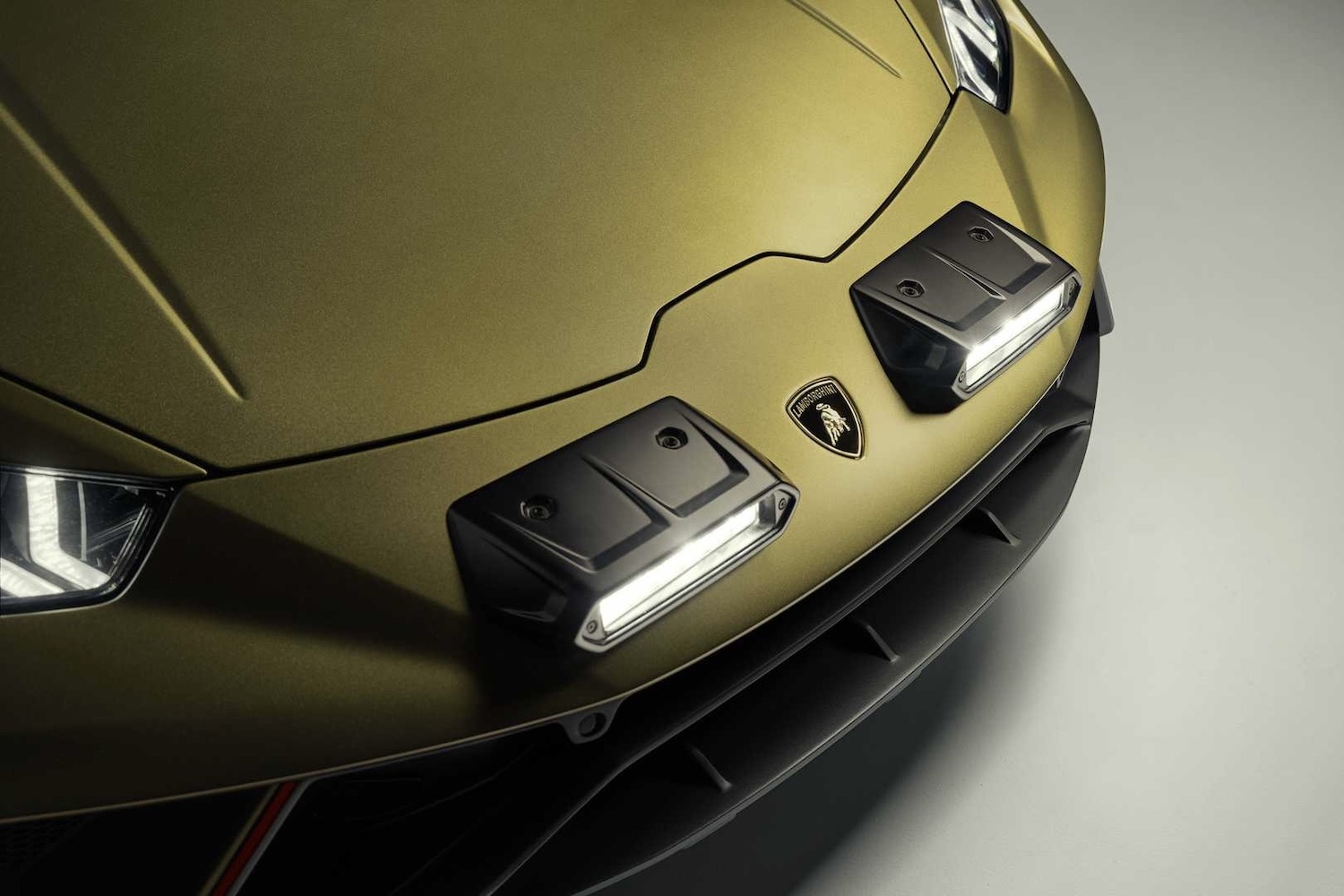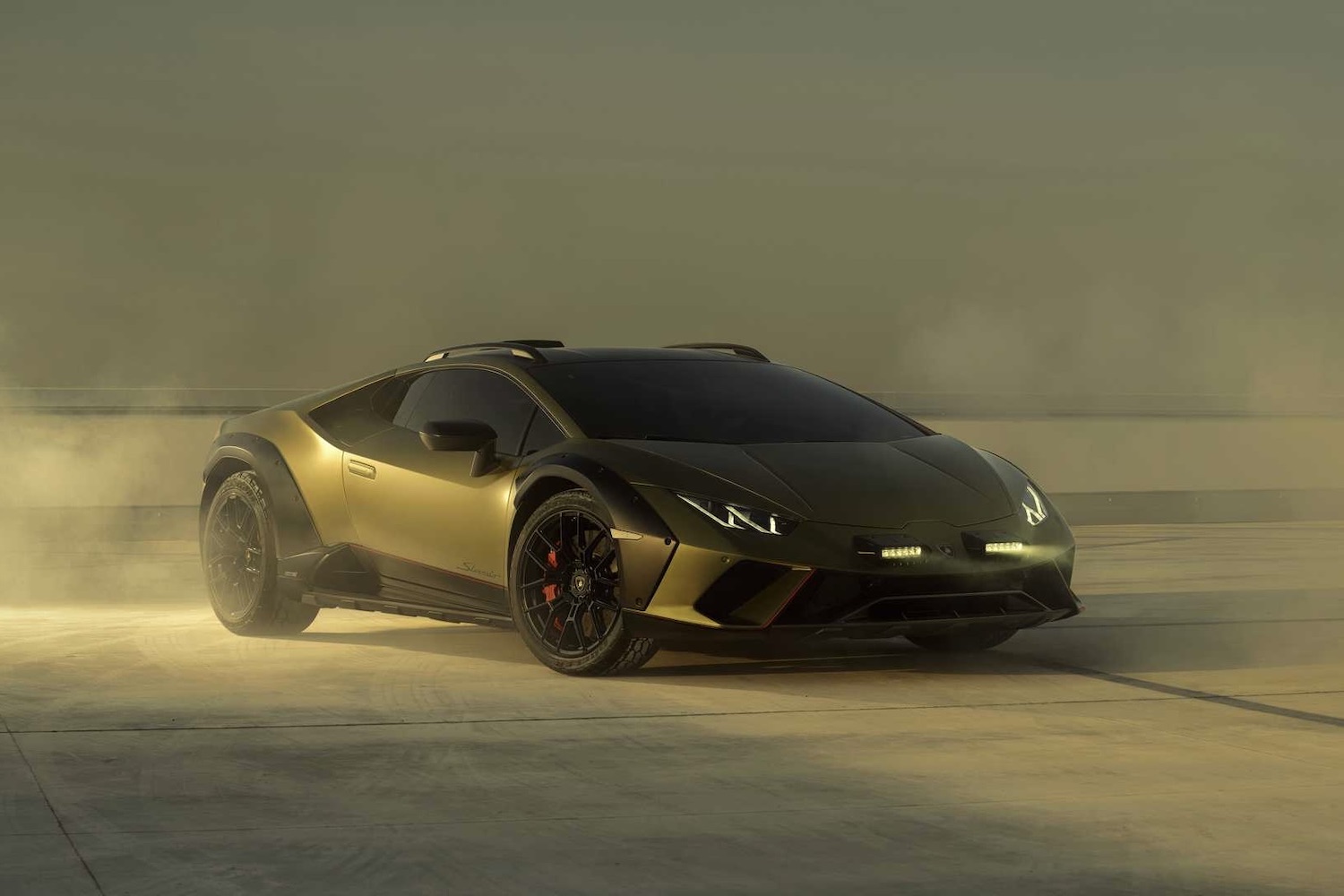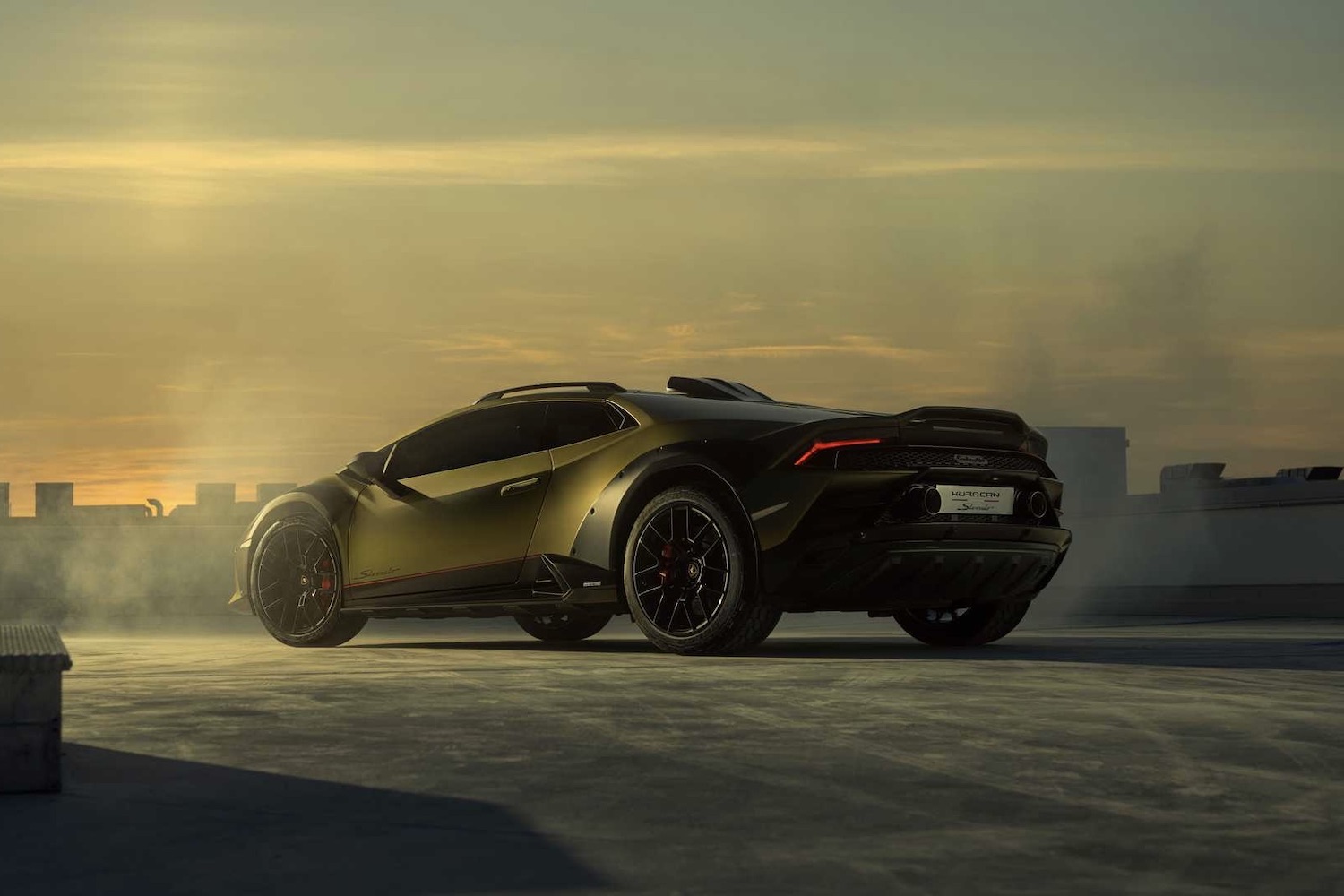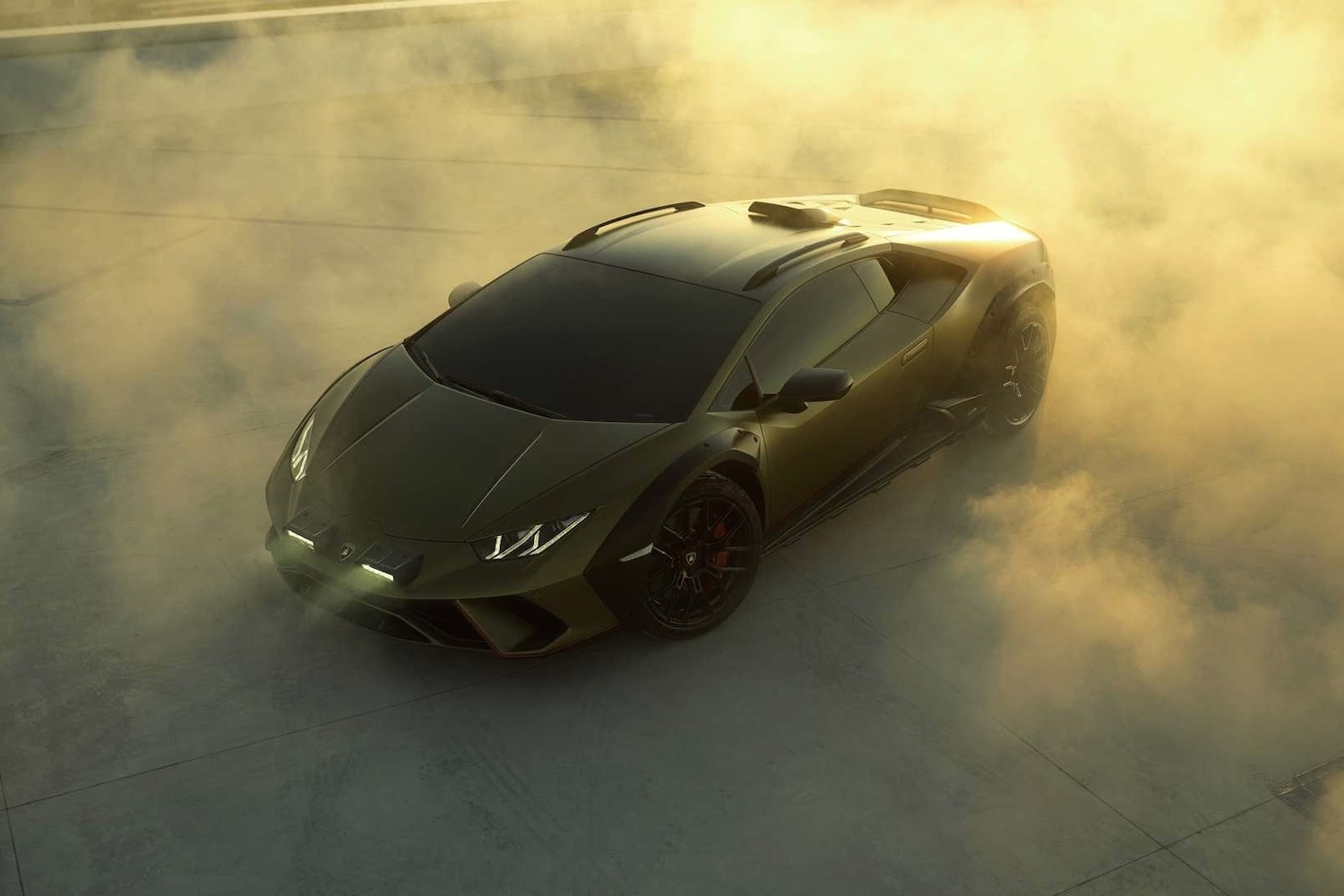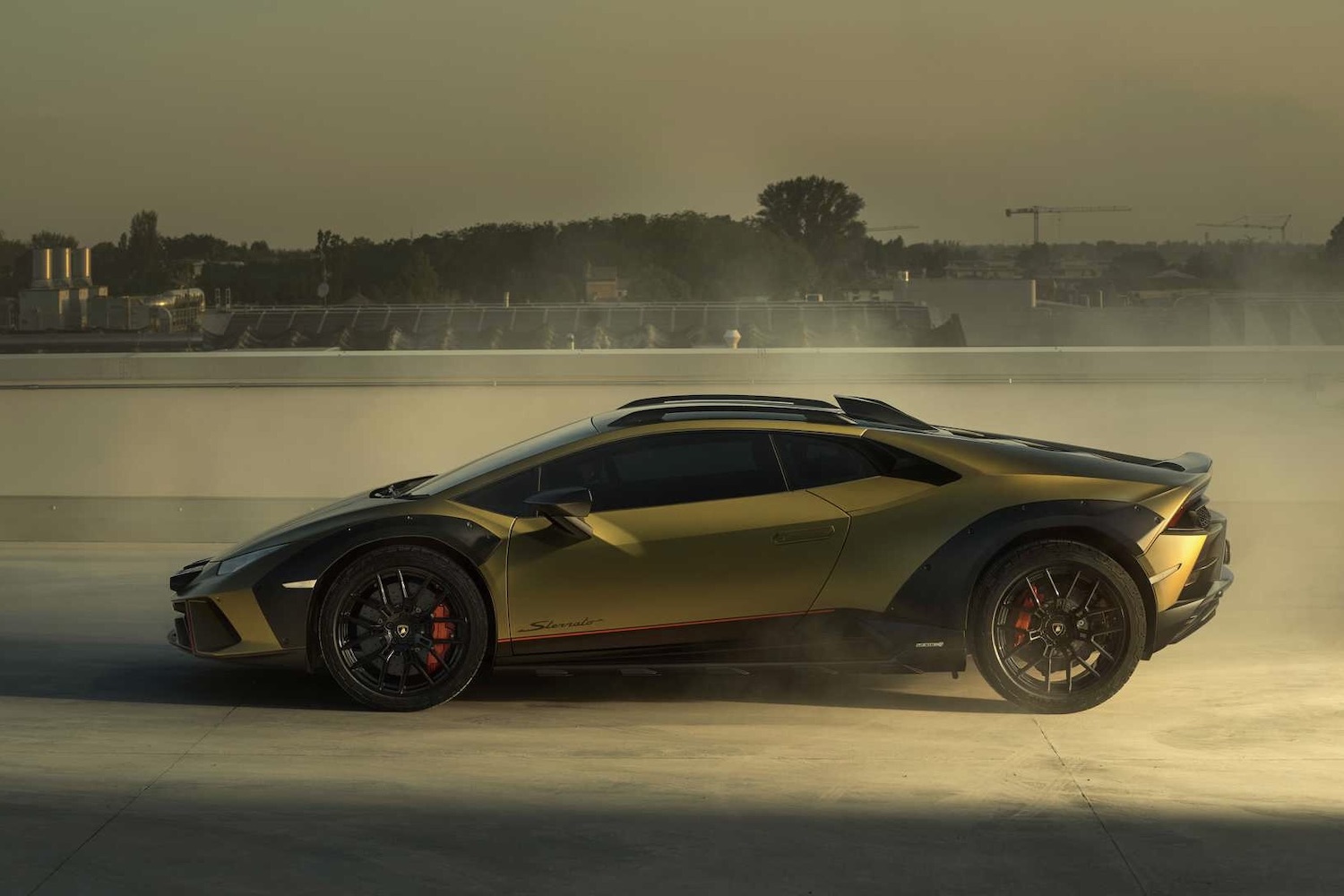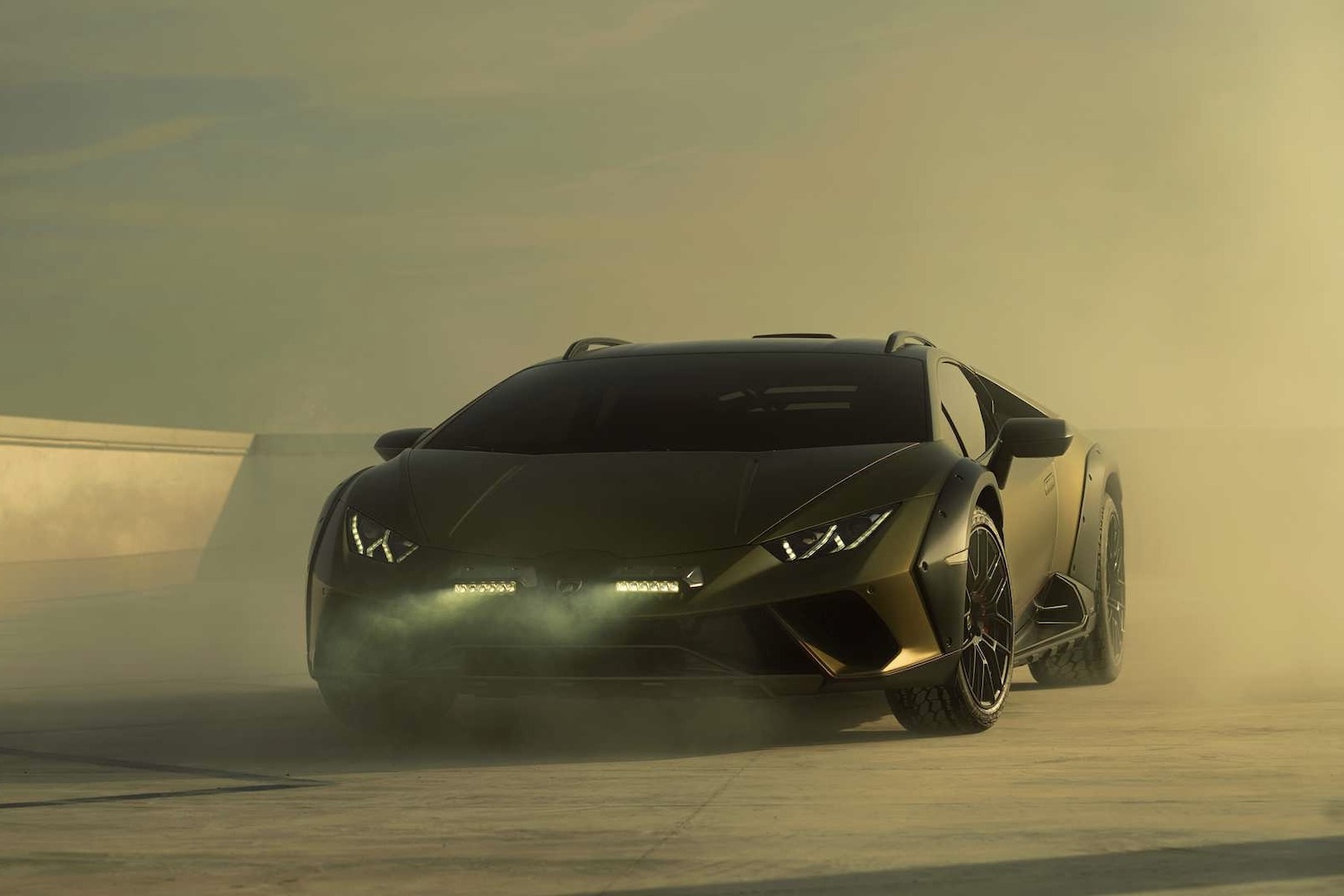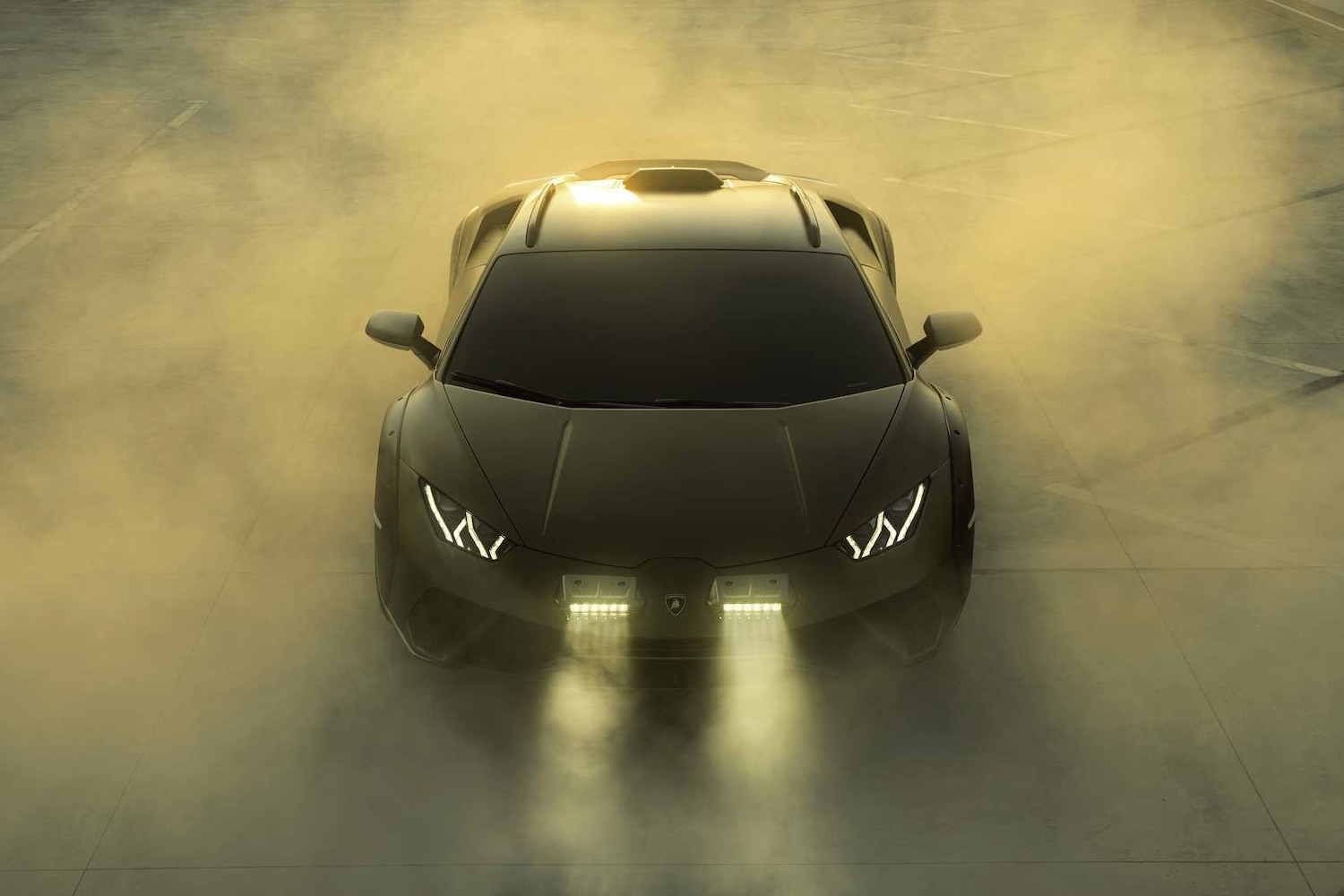One of my favorite things to do in automotive-related video games like Forza Horizon, which give you so much freedom, is to create a rally-inspired supercar. There’s something so fulfilling about having a car that’s meant to do one thing, but completely flipping its purpose with long-travel suspension and beefy tires and creating something entirely different. While most of us will have to dream about a rally-inspired supercar, Lamborghini has finally revealed a production version of the Huracan supercar that’s meant to go off-road. It’s taken the automaker roughly four years to come out with the really-ready Huracan Sterrato, but it could go down as one of Lamborghini’s best modern supercars.
Take a look at the Huracan Sterrato, and you’ll immediately notice that it’s not like the other Huracans in Lamborghini’s lineup. With plastic fender flares that look like they were bolted onto the body, roof rails that can hold 66 pounds, a roof-mounted air intake, an extra set of front lights mounted on the hood, and a slightly raised ride height, the Sterrato is clearly meant to go off-road. It’s not a purpose-built rock crawler or a dune basher like the Ram 1500 TRX, but a blisteringly fast vehicle on loose terrain like dirt or gravel.
For drivers looking for bragging rights, you’ll want to look elsewhere. The Sterrato gives up a lot of numbers in the name of fun. The 5.2-liter V10 engine makes 601 horsepower, a loss of 30 horsepower from the regular Huracan because of the car’s unique air intake system. Peak torque, though, goes unchanged at 413 pound-feet. Still, the drop of power means that the Sterrato will get to 62 mph from a standstill in 3.4 seconds, nearly a full second off other Huracans. Top speed has also dropped to 160 mph. These changes probably have more to deal with the Sterrato’s all-terrain tires than its power drop.
Instead of tearing up a racetrack, the Sterrato is made to raise hell on a dirt trail. So, it has the necessary suspension upgrades to do just that. The supercar has 1.7 inches of extra ride height, as well as a track that has been increased by 1.2 inches at the front and 1.4 inches at the back. To be able to handle any bumps, the Sterrato’s suspension has been softened considerably. The
Lamborghini hasn’t provided any pictures of the Sterrato’s interior yet, but the automaker claims that the supercar will have a few new functions like a compass, an inclinometer, a steering angle repeater, and a pitch and roll indicator that can be accessed through the infotainment system. Sterrato Green microfiber trim will be a new option on the inside.
With hundreds of supercars all focusing on setting quicker lap times, we applaud Lamborghini for doing something different. This reminds us of the Lamborghini of old, when it did things differently and marched to the beat of its own drum. Lamborghini has plans to build around 1,500 units of the Huracan Sterrato starting next February. Pricing for America hasn’t been announced yet, but it will cost around $270,000 according to today’s conversion rates in Europe. With today’s crazy market and a lengthy list of YouTubers with cash to blow, we’re sure these will be scooped and resold at crazy prices, with only a handful able to actually get dirty.
